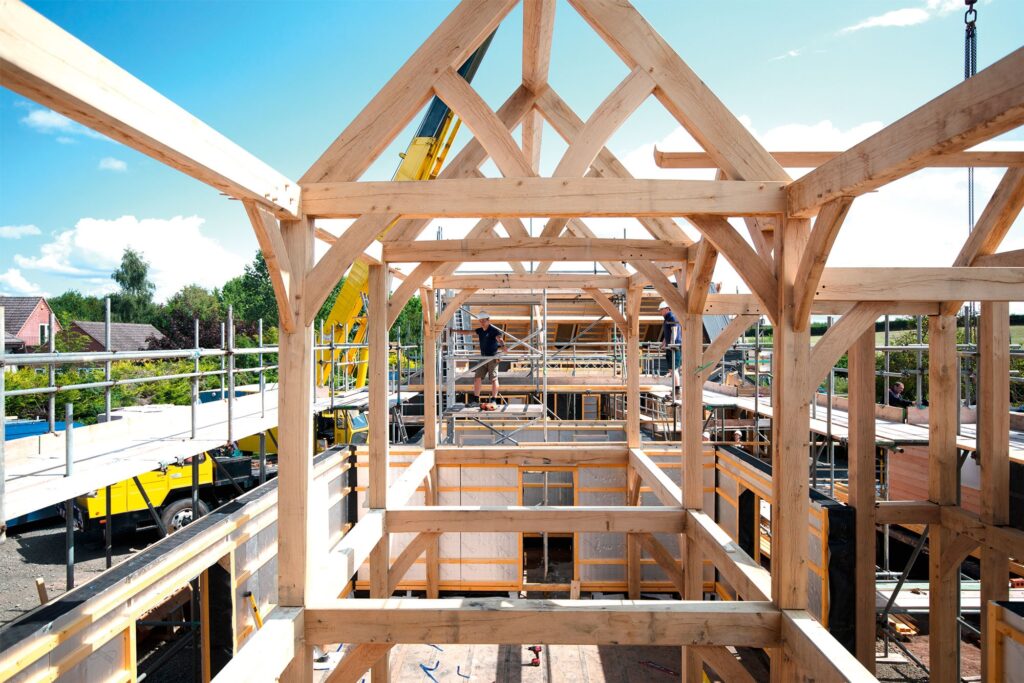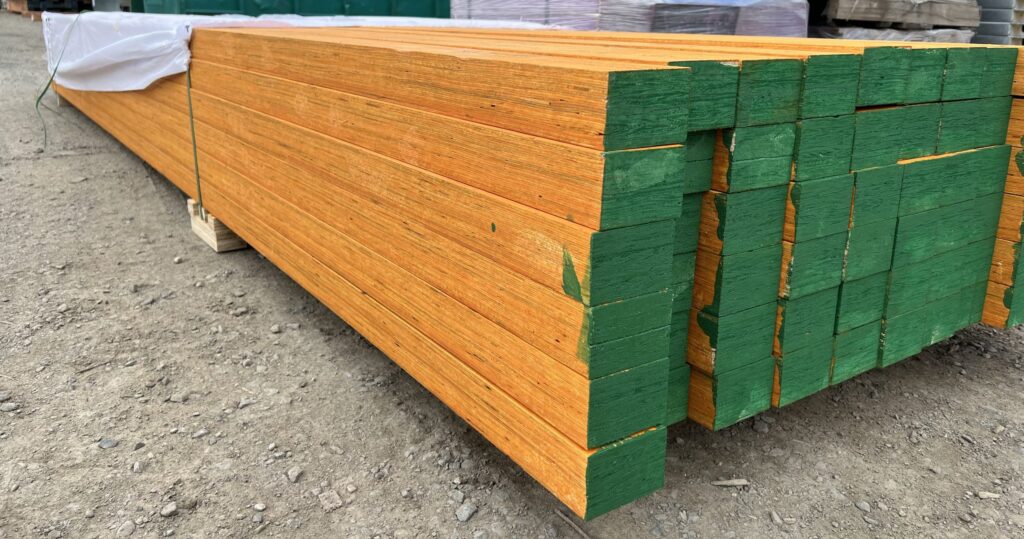LVL timber is a popular choice for many professionals in the construction industry when it comes to formwork solutions. This versatile material offers numerous benefits, ranging from its durability and strength to its cost-effectiveness and environmental impact. By understanding the advantages of using LVL timber, professionals can make informed decisions that will not only benefit their projects but also the environment. In this article, we will explore what LVL timber is, its key characteristics, and the various reasons why it is the preferred choice for formwork solutions.
Understanding LVL Timber
What is LVL Timber?
LVL timber, also known as laminated veneer lumber, is a type of engineered wood product that is commonly used in construction. It is made by bonding together several layers of thin wood veneers with the help of adhesives. These veneers are typically oriented in alternating directions to improve the material’s strength and dimensional stability.
In conclusion, buying LVL timber formwork for professional offers numerous benefits to construction professionals. From its durability and strength to its cost-effectiveness and environmentally friendly nature, LVL timber provides a reliable and sustainable choice for formwork applications. By investing in LVL timber, professionals can achieve successful construction projects while actively contributing to a greener future.
When it comes to the production of LVL timber, the process involves peeling logs into veneers and then drying them to the required moisture content. The veneers are sorted based on their properties before being coated with adhesive and assembled into a billet. This billet is then compressed under high pressure and heat to create a strong and durable engineered wood product.
Key Characteristics of LVL Timber
One of the main reasons why LVL timber is highly regarded in construction is its impressive strength-to-weight ratio. Compared to traditional solid timber, LVL timber is significantly stronger while being lighter in weight. This quality makes it a preferred choice for formwork solutions, where structural integrity is crucial.
In addition to its strength, LVL timber also offers excellent dimensional stability. It is less prone to warping, twisting, or splitting compared to solid timber, even under prolonged exposure to moisture or changing climate conditions. This stability ensures that formwork structures remain intact throughout the construction process.
Furthermore, LVL timber can be easily cut, drilled, and shaped to meet specific project requirements. Its versatility allows for the creation of complex and precise formwork structures, enabling professionals to achieve their desired outcomes efficiently.
Another notable characteristic of LVL timber is its environmental sustainability. By utilizing fast-growing plantation timber for the production of veneers, LVL timber promotes responsible forestry practices. Additionally, the manufacturing process of LVL timber generates minimal waste, further reducing its environmental impact.

Advantages of Using LVL Timber in Formwork
Durability and Strength of LVL Timber
One of the primary advantages of using LVL timber in formwork is its remarkable durability and strength. Due to its engineered design and high-quality adhesive bonding, LVL timber can withstand heavy loads and pressures commonly encountered in construction projects. This strength ensures the longevity of the formwork structures, reducing the need for frequent repairs or replacements.
Additionally, LVL timber is resistant to many factors that can compromise the integrity of formwork, such as moisture, chemicals, and impact. This resistance allows for the safe and efficient execution of construction tasks, even in challenging environments.
Furthermore, the dimensional stability of LVL timber minimizes warping, twisting, and shrinkage, maintaining the formwork’s shape and structural integrity over time. This stability is crucial for ensuring the accuracy and precision of concrete placements, resulting in high-quality finishes and overall project success.
Versatility of LVL Timber in Construction
LVL timber’s versatility extends beyond its structural properties. It can be used in a wide range of formwork applications, including walls, slabs, beams, and columns. Its flexibility makes it suitable for both horizontal and vertical installations, accommodating different project requirements.
Moreover, LVL timber can be easily customized to fit various geometric shapes and sizes. This adaptability allows professionals to create formwork structures that accurately replicate the desired design, ensuring the construction process progresses smoothly and efficiently.
When it comes to sustainability, LVL timber is an environmentally friendly choice for formwork construction. Made from fast-growing plantation timber, LVL production minimizes the impact on natural forests. Additionally, the manufacturing process of LVL timber consumes less energy compared to traditional timber products, reducing carbon emissions and promoting eco-conscious building practices. Find more about carbon on https://extension.psu.edu/what-is-carbon
Cost-Effectiveness of LVL Timber
Initial Costs of LVL Timber
While the initial costs of LVL timber may be slightly higher than those of traditional solid timber or other formwork materials, their long-term benefits outweigh the upfront investment. LVL timber’s durability and longevity reduce the need for frequent replacements, minimizing the associated costs over the lifespan of the structure.
Furthermore, LVL timber’s consistent quality and dimensional stability result in less wastage during the construction process. This efficiency helps in reducing material costs and increasing overall project profitability.
Moreover, LVL timber’s engineered construction allows for greater design flexibility, enabling architects and builders to create innovative and complex structures with ease. Its strength and reliability make it an ideal choice for applications where traditional timber may not suffice, opening up new possibilities in construction and design.
Long-Term Savings with LVL Timber
Besides the cost savings in material replacements, LVL timber also presents long-term savings in terms of maintenance and labor. Its resistance to decay and pests eliminates the need for costly treatments or repairs, saving both time and money.
Additionally, the ease of handling and installation of LVL timber reduces labor-intensive tasks, saving labor costs and increasing productivity. Its lightweight nature allows for easy and quick assembly, reducing construction time and improving overall project efficiency.
Environmental Impact of Using LVL Timber
Sustainable Sourcing of LVL Timber
As sustainability becomes an increasingly important consideration in the construction industry, LVL timber offers a viable solution. It is manufactured from fast-growing plantation trees, ensuring a sustainable supply of timber without depleting natural forests.
LVL timber manufacturers also adhere to responsible forestry practices, promoting reforestation and minimizing environmental impact. By choosing LVL timber for formwork solutions, professionals can contribute to a more sustainable construction industry.
Furthermore, the sustainable sourcing of LVL timber plays a crucial role in biodiversity conservation. Plantation trees used for LVL production provide habitats for various wildlife species, contributing to the overall ecosystem’s health. This harmonious relationship between timber production and biodiversity preservation showcases the multifaceted benefits of utilizing LVL timber in construction projects.
LVL Timber and Carbon Footprint
Compared to other construction materials, LVL timber has a lower carbon footprint. The production process of LVL timber consumes less energy and releases fewer harmful emissions into the environment. By using LVL timber in formwork, professionals can actively reduce the industry’s carbon footprint and promote a greener future.
Moreover, the carbon sequestration capacity of LVL timber further enhances its environmental credentials. As trees grow, they absorb carbon dioxide from the atmosphere, storing it within their fibers. This means that LVL timber not only has a low carbon footprint during production but also continues to sequester carbon throughout its lifespan, making it a truly sustainable choice for eco-conscious construction projects. To read more about atmosphere click here.
Safety Considerations for LVL Timber in Formwork
Fire Resistance of LVL Timber
LVL timber possesses excellent fire-resistant properties, making it a safe choice for formwork solutions. It has a high resistance to ignition and contributes significantly less to fire compared to other materials. This fire resistance not only protects the structure but also ensures the safety of workers on the construction site.
Moreover, the fire-resistant nature of LVL timber is a result of its manufacturing process, which involves bonding together layers of wood veneers with adhesives under high heat and pressure. This process creates a dense and compact material that is inherently less flammable, providing an added layer of safety in construction projects.

Resistance to Pests and Decay
Formwork structures face various environmental challenges, including pests and decay. However, LVL timber’s resistance to these factors ensures the long-term integrity of the formwork solutions. With minimal susceptibility to pests and decay, LVL timber eliminates the risk of structural compromise, allowing for a safe construction process.
Additionally, the manufacturing process of LVL timber involves treating the wood with preservatives that enhance its resistance to pests and decay. These preservatives penetrate deep into the layers of the timber, providing long-lasting protection against wood-boring insects and fungal decay. This extra layer of defense further solidifies LVL timber as a reliable and durable choice for formwork applications.
Other resources: The Versatility of LVL Formwork in Various Construction Applications







